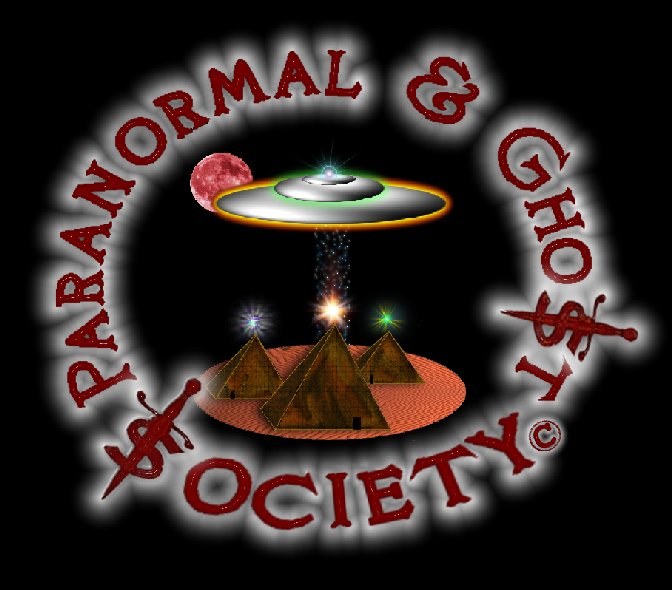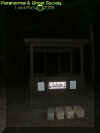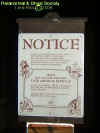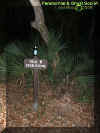|
|
||
|
Silver Glen Springs & Lake George may just be one of the nicest places in the Ocala Forest all around. The spring is the first magnitude of outstanding natural and prehistoric value. Its also the highest in ecological quality among the 600 springs in the state of Florida. The spring has the lowest nitrates so many manatees come here as a refuge. The pool where the spring is located is about 200 feet both ways its the size of a small pond or lake. There is two limestone vents or caverns and the spring run is about 200 feet which flows into the St. Johns River. The depth is about 18 feet in some areas the water is very blue but since its a private spring aquatic grass has started to grow on the bottom. The spring is home to a large resident alligator that sits down on the bottom which a photo is present at the concession shop. The shaft is said to be 40 feet deep and full of fish. The walls where there is a natural well are made of concrete this protects the spring from outside interference like trees and dirt. The other spring is about 20 feet deep and of course if you were to swim down into them there probably are caverns under water. The area surrounding the spring was destroyed by wild fires in 1998 so many trees are scorched or killed. The run is about a half of mile that flows into Lake George or the St Johns since that also connects to the lake. There are during the winter many house boats which float around the springs. The site is of pre Columbian native American habitation. There are many large shell mounds surrounding the spring and artifacts have been found here. Artifact hunters have dug up much of the dirt beneath the trees destroying some mounds. The erosion then left hollow spaces underneath the tangled roots. Some of the mounds are still very in tact while others are dug up and a half of mound remains. A very large Indian village use to exist right along the springs and they did thrive hundreds of years ago off the land. In addition to the area being inhabited by Indians a star pendant was found from the village site along with a large 47 inch bowl. So its very obvious the area was inhabited. It was found out later that in the 1820s and 30s that General Clinch had a plantation here. So now not only do you have Indian spirits but you also have ghost from the plantation which haunt its old wagon trails, woods, trails etc. So it truly is a place of rich history. Many people snorkel here and this was the area a woman was killed at I believe by a gator May of 2006. Its strange cause a week after it happened we were here investigating and had no idea of the incident. The gator bit her a few times and I guess she drowned from injury and being pulled around. So there are gators here and you have to be really careful. As far lake George goes you can reach it from the springs there is a very long trail which takes you along the lake itself. Its not an easy hike to do in the Florida humidity but we took the trail long enough to reach the lake and walk along it for awhile. The lake is said to have been at one time the second largest lake but when lake Eustis and Apopka were expanded it put Lake George I believe at #5. The lake George area is said to be roughly 35,000 acres with alot of pine flat woods and hardwood swamps. There is fox squirrels, black bear, bald eagles, white tailed deer, otters, osprey, alligators, wild turkey, bobcats and maybe even bigfoot. The lake is roughly 5 miles wide by 18 miles long. William Bartram talks about his journeys along Lake George and how he encountered various Indian tribes where he actually was a guess in the villages along this lake. The area has a long Timucuan Indian History to it and the land for lake George is divided into 3 separate tracts one of them you will read about in the next area called Bluffton Point. One last piece of history I
would like to discuss is about the lighthouse which was a screw pile
lighthouse out in the middle of the water. It was built in 1885 and by
1916 the light was removed. The building remained an active fog station
all the way to about 1943. However in 1938 one of the keepers named A.J.
Anderson in the lighthouse was murdered and the case was never solved. The
lighthouse was only reachable by boat which made things all the more
eerie. The lighthouse was burned down by vandals in 1974 and all that
remains is its wood pilings out on Lake George. But when it did stand it
was 1 1/2 half stories, composed of wood, and had a lantern on the
roof. The lens was replaced at least twice with a fourth order then
fifth order Fresnal Lense. When the lens was removed later on a fog bell
was used to signal the boats in Lake George. Rick-LordOfThyNight
|
||
|
|
|


































